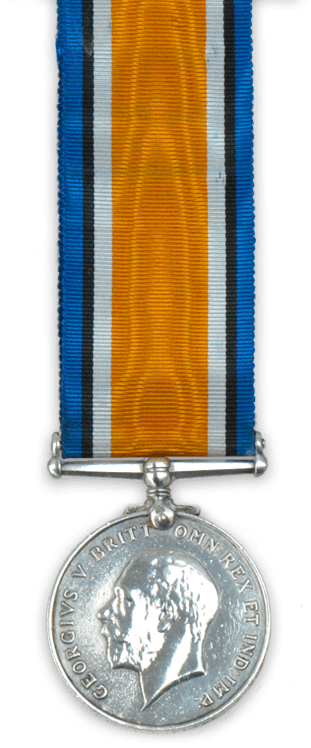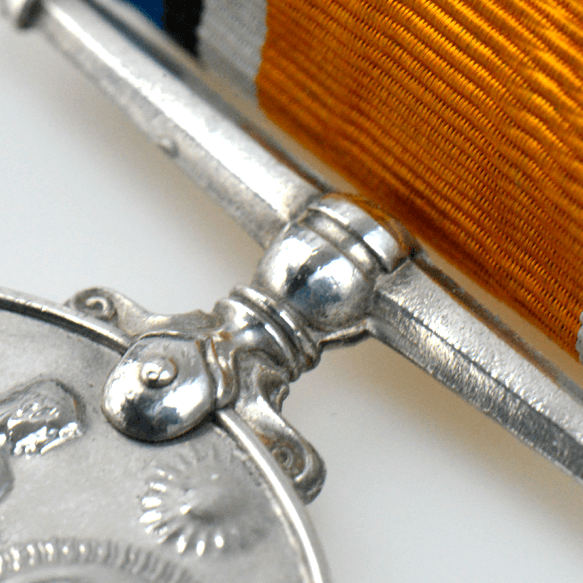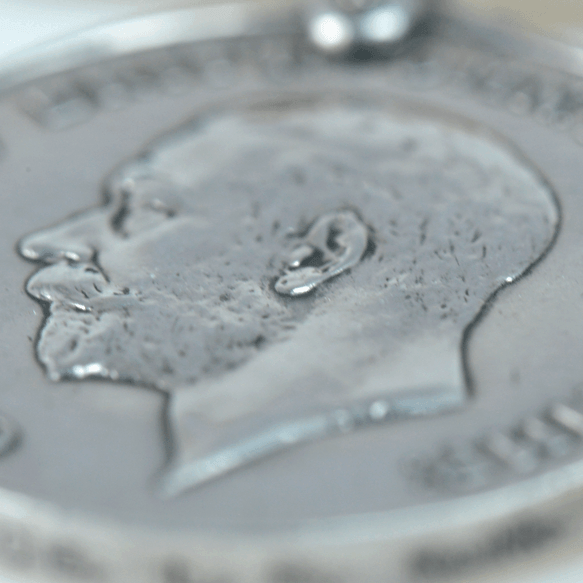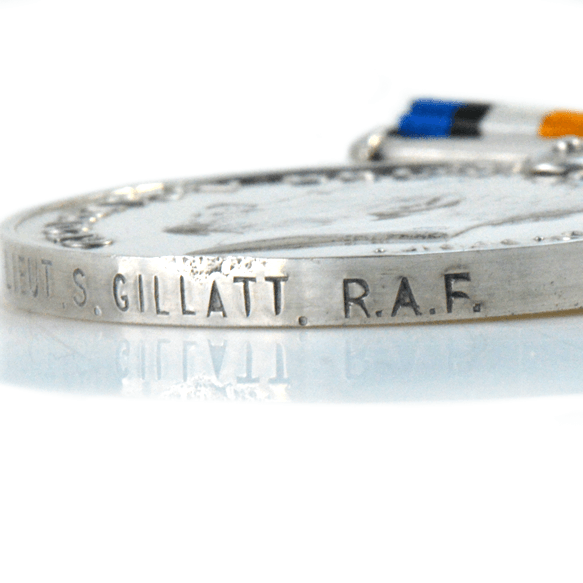British War Medal
This medal is the only First World War medal that could be awarded by itself. 6.5 million were issued to British and Imperial armed forces and their support services. It is the most commonly owned First World War medal. It was not just soldiers who were awarded this medal - nurses, ambulance units and the Coast Guard also served.
A bronze version was awarded to members of labour corps who had non-combatant roles: these included people from China, India and Malta, as well as the Macedonian Mule Corps.


Ribbon View
Unlike other medals, the blue, orange, black and white stripes of the British War Medal have no significance. They just looked good.

Suspension View
The is a simple, straight bar.

Obverse View
The obverse of the medal used an existing design from coins to show George V's head. Around it is a Latin inscription that translates as 'George V King of Great Britain and Emperor of India'.

Reverse View
The reverse of the medal shows a man on horseback who is trampling emblems of the Central Powers. The warrior on horseback is meant to symbolise man's control over the forces of war. It is also interpreted as a different view of St George defeating the dragon. If you look very closely on the bottom right you can see the initials W M - these belonged to the designer of the medal W. McMillan.

Features View
The naming around the edge was machine engraved. It shows the number, name and rank of the person it was awarded to.

British War Medal
This medal is the only First World War medal that could be awarded by itself. 6.5 million were issued to British and Imperial armed forces and their support services. It is the most commonly owned First World War medal. It was not just soldiers who were awarded this medal - nurses, ambulance units and the Coast Guard also served.
A bronze version was awarded to members of labour corps who had non-combatant roles: these included people from China, India and Malta, as well as the Macedonian Mule Corps.
-

Ribbon
Unlike other medals, the blue, orange, black and white stripes of the British War Medal have no significance. They just looked good.
-

Suspension
The is a simple, straight bar.
-

Obverse
The obverse of the medal used an existing design from coins to show George V's head. Around it is a Latin inscription that translates as 'George V King of Great Britain and Emperor of India'.
-

Reverse
The reverse of the medal shows a man on horseback who is trampling emblems of the Central Powers. The warrior on horseback is meant to symbolise man's control over the forces of war. It is also interpreted as a different view of St George defeating the dragon. If you look very closely on the bottom right you can see the initials W M - these belonged to the designer of the medal W. McMillan.
-

Features
The naming around the edge was machine engraved. It shows the number, name and rank of the person it was awarded to.